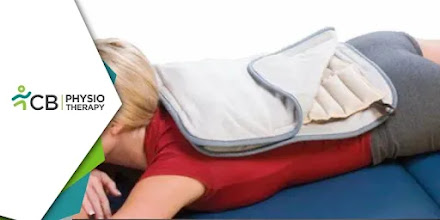Osteoarthritis (OA) has long been considered a condition affecting older individuals, particularly those over 50. However, recent studies indicate a worrying trend: a significant rise in osteoarthritis cases among young adults, even in their 20s and 30s. Once deemed a degenerative disease linked to aging, OA is now emerging as a pressing health concern for younger populations. The question is: why is this happening, and what can be done to treat and prevent it at an early stage?
Understanding Osteoarthritis in Young Adults
Osteoarthritis is a condition characterized by the gradual breakdown of cartilage in the joints, leading to pain, stiffness, and reduced mobility. It primarily affects weight-bearing joints like the knees, hips, and spine. While genetic predisposition can play a role, external factors such as lifestyle choices, injuries, and environmental influences contribute significantly to early-onset OA.
Causes Behind the Rise of OA in Youngsters
Several factors have contributed to the increase in osteoarthritis cases among young people, few are mentioned here:
1. Sedentary Lifestyle and Obesity
With the rise in sedentary jobs, excessive screen time, and reduced physical activity, more young adults are leading inactive lifestyles. Lack of exercise weakens muscles around the joints, leading to poor shock absorption and increased stress on cartilage. Additionally, obesity, which is becoming more prevalent, puts excess pressure on weight-bearing joints, accelerating wear and tear.
2. Sports and High-Impact Activities
While regular physical activity is crucial for joint health, excessive or improper training can contribute to early osteoarthritis. Young athletes, particularly those engaged in high-impact sports like football, basketball, and running, often suffer from injuries such as ligament tears, meniscus damage, and fractures. Without proper rehabilitation, these injuries can lead to premature cartilage degradation.
3. Poor Posture and Joint Overuse
Long hours of desk work, improper sitting posture, and excessive use of mobile devices put undue strain on the spine, knees, and hands. Conditions like tech neck, repetitive strain injuries, and poor ergonomics contribute to joint stress and degeneration over time.
4. Inadequate Nutrition and Deficiencies
A diet lacking in essential nutrients such as Vitamin D, calcium, and omega-3 fatty acids affects bone and joint health. Poor dietary habits, including excessive consumption of processed foods and sugary drinks, contribute to systemic inflammation, which can worsen joint damage.
How to Get Treated Early and Manage OA Effectively
Early intervention can significantly improve quality of life and prevent severe joint damage. Here’s what young individuals can do to manage and treat OA effectively:
1. Physiotherapy and Exercise
Physiotherapy is one of the most effective ways to manage osteoarthritis. A structured exercise program helps strengthen the muscles around the affected joints, improving stability and reducing pain. Recommended exercises include:
· Low-impact aerobic activities like swimming, cycling, and walking
· Strength training to support joint function
· Flexibility exercises such as yoga and stretching
A physiotherapist can provide tailored rehabilitation plans to prevent further joint degeneration.
2. Weight Management
Maintaining a healthy weight is crucial to reducing stress on joints. Losing even a small percentage of body weight can significantly lower the risk of OA progression, particularly in weight-bearing joints like the knees and hips.
3. Pain Management Techniques
For those experiencing discomfort, several non-invasive pain management techniques can help:
· Heat and cold therapy to reduce inflammation and stiffness
· Electrotherapy ( TENS), Laser therapy for pain relief
· Manual therapy and joint mobilization to improve movement
5. Bracing and Orthotics
Wearing supportive braces or custom orthotics can help offload stress from affected joints, improving stability and reducing pain during daily activities.
6. Lifestyle Modifications
Small changes in daily habits can go a long way in managing OA effectively:
Maintaining good posture while working or using electronic devices
Taking breaks to stretch and move during prolonged sitting
Avoiding excessive high-impact activities and opting for joint-friendly workouts
Preventing Osteoarthritis in the Long Run Prevention is always better than cure. Young individuals should take proactive steps to safeguard their joint health:
· Engage in regular, balanced exercise
· Follow proper warm-up and cool-down routines before and after workouts
· Maintain a healthy diet and weight
· Avoid smoking and excessive alcohol consumption, as they contribute to inflammation and joint damage
The rising cases of osteoarthritis among youngsters are an alarming health concern. Through physiotherapy, exercise, proper nutrition, and lifestyle adjustments, young adults can maintain their joint health and lead an active, pain-free life.





